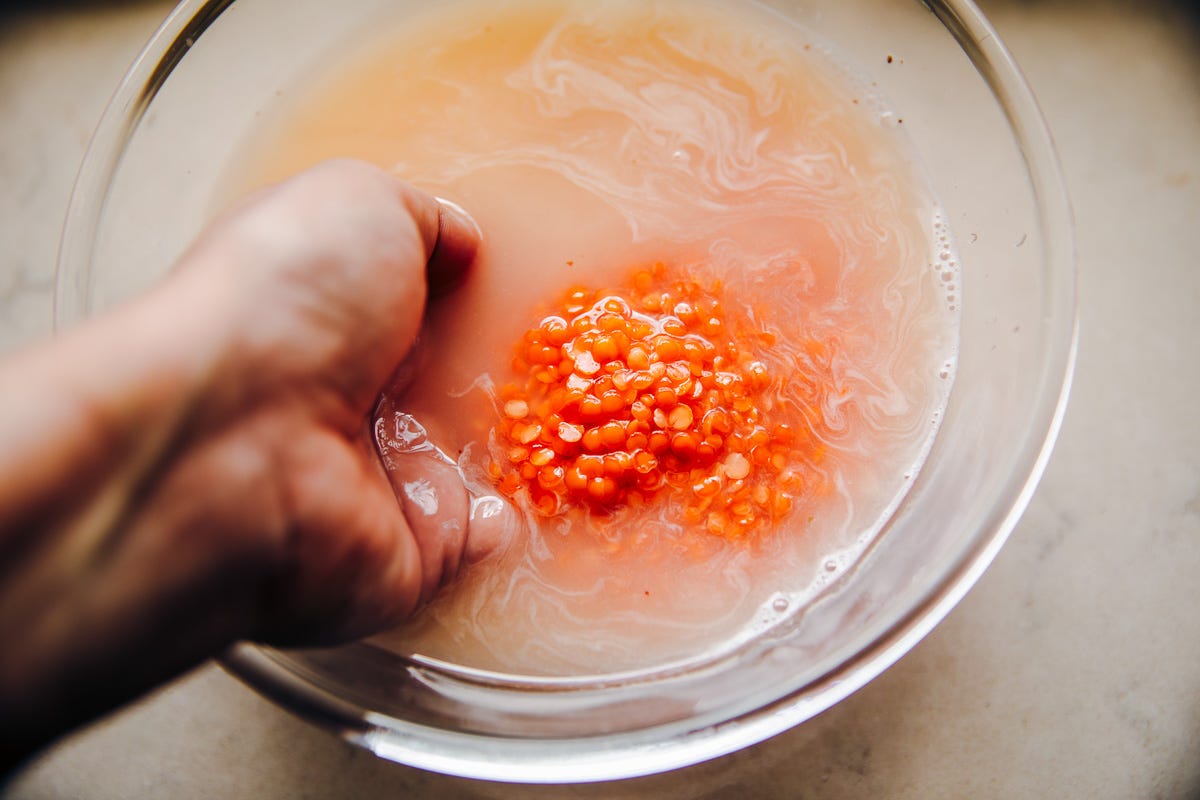🌿 Retreat Dal
The great dhal debate + 4 Dal Making techniques + Tadka variations + Best Tips
Welcome to the first member recipe of 2024. Today’s recipe is a very special everyday dal topped with golden pan-fried veggies. This dal follows the Ayurvedic style of cooking and eating, is deeply nourishing for your body, is incredibly delicious and creamy and very easy to make. I call it a Retreat Dal and it is inspired by dals I have eaten at wellness and yoga retreats over the years.
Is it dal, daal, dahl or dhal?
There is almost thrice the number of people searching for “dhal” on Google than there are for “dal”. But does it mean that “dhal” or “dahl” is the correct term for slow-simmered lentils that are an everyday staple in Indian homes? No, it doesn’t. The search habits prove that. The searches on Google mostly come from people who want to learn how to make it or are looking for a recipe, not people who have grown up eating dal every day and have a multitude of versions from their families and friends.
The most accurate spelling is dal. The most accurate pronunciation is daa-l.
The d is a “soft d” where the tip of your tongue touches and lies flat against the back of the front top teeth in the roof of your mouth, your jaw relaxed. There is no hard emphasis on the “d” (this is the d sound you make by pressing the tongue against the gummy middle roof of your mouth and widening your jaw). There is also no “dh” sound in dal.
I was born and brought up in India for the first two and half decades of my life. “Dal” or very occasionally “daal” were the only spellings I ever saw in magazines, cookbooks, restaurant menus etc.
A contributor on Reddit describes it quite accurately here
While there is no correct spelling in English as such, I have found Dal and Daal to be commonly used.
I would avoid "Dhal" because it encourages an Anglophone speaker to say it with an aspirated "dha" ( धा) sound, whereas the syllable is sort of dental "da" (दा) sound in very many desi languages such as Hindi--Urdu, Gujarati, Marathi, Punjabi, Nepali as far as I can tell.
(For similar reasons, I avoid spelling Gandhi as Ghandi---the second spelling was sometimes used for his name historically, but it encouraged the wrong pronunciation).
When writing for fellow Indians or people from neighbouring cultures, I tend to write "Dal" but I sometimes use "Daal" when writing for Westerners because I want to avoid it being read out as "dull" by those who are completely unfamiliar with the cuisine.
Try Some Of My Dal Recipes
Rainbow Veggie Dal | Tomato Garlic Dal | Spinach Dal | Turmeric Dal | Red Lentil Veggie Dal | Vegan Dal Makhani
What is the right way to cook dal?
Indians swear by their pressure cookers. The whistling sound starts emanating from various kitchens in city apartment blocks from as early as 4 am. Tiered steel containers, some filled with raw rice and water and some filled with lentils and water are lowered in pressure cookers. It only takes 12-15 minutes for rice to steam and lentils to be pressure-cooked to perfection.
Once the raw lentils are pressure cooked, they are added to a “tadka” - a ghee-based fry-up of spluttering whole seeds and aromatics. Finally, spices and water are mixed through and the dal is allowed to simmer for 10 minutes for all the flavours to come together. This is the traditional method of cooking a simple everyday dal.
I was about 6 years old when I first learned to cook dal in this fashion in my mum’s kitchen. In the absence of a pressure cooker, a pot is used to simmer dried lentils, salt and water to a textural mush (almost like cooking pasta al dente). A tadka is then added to the top and stirred through.
There are a couple of different methods that each household follows to make their dal. Here are the 4 most common techniques of cooking dal.








